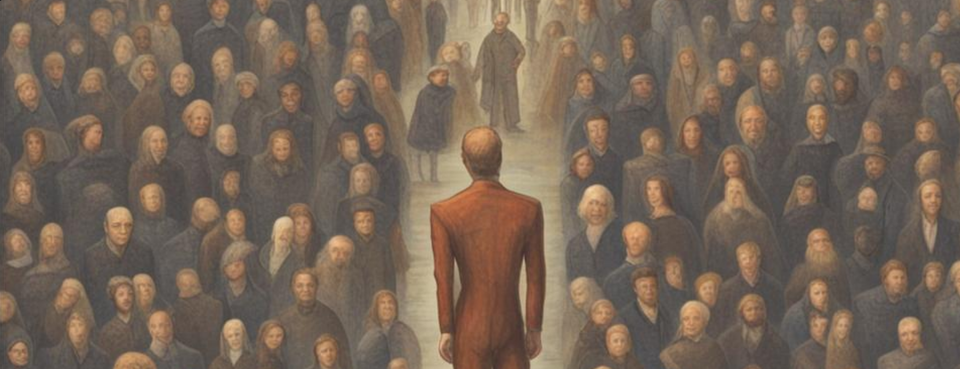The 9/10 Rule: Analysing Human Nature

The 9/10 Rule presents a provocative theory about human behavior, categorizing 90% of people as "fools" who unintentionally cause harm, 9% as "evil" individuals who knowingly harm others for personal gain, and only 1% as neither fool nor evil.
Definitions of Fools and Evil
The 9/10 Rule theory defines two key categories of people based on their behavior and intentions. A "fool" is characterized as someone who causes harm to themselves and others while believing they are doing the right thing.[1][2] This aligns with biblical descriptions of fools as those who lack wisdom and understanding, often acting rashly or speaking foolishly without considering consequences.[3][4] The "evil" person, on the other hand, is defined as someone who knowingly and intentionally harms others for their own benefit.[5][6] This echoes biblical portrayals of evil individuals as those who take pleasure in hurting others and actively seek to bring others down.[7][8] These definitions form the foundation for the theory's provocative categorization of humanity, suggesting that the vast majority fall into one of these two problematic groups, with only a small minority avoiding both classifications.
[1] https://www.leavinglaodicea.com/the-life-of-a-fool/
[2] https://www.worldchallenge.org/blog/simple-foolish-or-evil-person
[3] https://iblp.org/what-are-five-types-fools/
[4] https://www.gotquestions.org/fool-Bible.html
[5] https://www.biblestudytools.com/bible-study/topical-studies/why-is-it-such-a-bad-thing-to-be-a-fool.html
[6] https://terry-porter.com/how-to-deal-with-the-wise-foolish-and-evil-person/
[7] https://biblicalmissiology.org/blog/2014/02/10/the-evil-of-foolishness/
[8] https://www.boundaries.me/blog/wise-foolish-or-evil-how-to-know-who-you-re-dealing-with
Numerical Breakdown of Categories
The 9/10 Rule theory provides a numerical breakdown of how the global population would be categorized according to its definitions. Here is a table summarizing the numerical breakdown based on an estimated world population of 8,170,332,076:
| Category | Number of People | Percentage |
|---|---|---|
| Fools | 7,353,298,868 | 90% |
| Evil | 735,329,887 | 9% |
| Neither Fool nor Evil | 81,703,321 | 1% |
This breakdown illustrates the stark divisions proposed by the theory, with the vast majority of humanity classified as either "fools" or "evil" according to the given definitions. Only a small fraction of the population (1%) is considered to fall outside these two categories[1].
[1] https://en.wikipedia.org/wiki/Category:Numerical_analysis
Societal Implications of the Theory
If accepted, the 9/10 Rule would have profound implications for society, potentially reshaping various institutions and systems. Education reform might focus on developing critical thinking skills to reduce the number of "fools," while governance structures could be designed to limit the influence of "evil" individuals and promote leadership from the 1% who fall outside both categories. Social programs could emphasize raising awareness about unintended consequences and promoting empathy, while economic systems might be restructured to disincentivize actions that harm others for personal gain. Media and information dissemination could prioritize transparent, factual reporting to combat misinformation that leads to "foolish" behavior.
Case Studies Illustrating the 9/10 Rule
To illustrate the 9/10 Rule theory, we can examine several case studies that exemplify the behaviors of "fools," "evil" individuals, and those who fall into neither category. These examples are intended to provide concrete illustrations of how the theory might be applied to real-world situations.
Case Study 1: The "Fool" Category
Consider the case of well-intentioned parents who refuse to vaccinate their children due to misinformation about vaccine safety. Despite believing they are protecting their children, their actions potentially endanger both their own children and others in the community by reducing herd immunity. This aligns with the definition of a "fool" as someone who causes harm while thinking they are doing right[1].
Case Study 2: The "Evil" Category
An example of the "evil" category could be a corporate executive who knowingly allows the dumping of toxic waste into a river to save on disposal costs, despite being aware of the environmental and health consequences for local communities. This action fits the definition of "evil" as someone who knowingly harms others for personal or organizational benefit[2].
Case Study 3: Neither "Fool" nor "Evil"
A rare example of someone falling into neither category might be a whistleblower who exposes corporate or government wrongdoing at great personal risk. Such an individual acts with full knowledge of their actions and potential consequences, aiming to benefit society rather than themselves[3].
These case studies demonstrate how the 9/10 Rule theory might be applied to categorize human behavior. The "fool" category encompasses those who cause harm through ignorance or misguided beliefs, while the "evil" category includes those who knowingly harm others for personal gain. The rare individuals who fall into neither category are those who act with full awareness and prioritize societal benefit over personal interest.
It's important to note that these categorizations are based on the specific definitions provided by the 9/10 Rule theory and do not account for the complexity and nuance of human behavior and motivation. The theory presents a simplified model of human nature that, while provocative, may not capture the full spectrum of human actions and intentions[4][5].
[1] https://www.parliament.uk/globalassets/documents/commons-committees/political-and-constitutional-reform/00-CASE-STUDIES.pdf
[2] https://www.lse.ac.uk/law/people/academic-staff/julia-black/Documents/black5.pdf
[3] https://civitas.org.uk/content/files/TheProblemwithHumanRightsLaw.pdf
[4] https://www.ilo.org/sites/default/files/wcmsp5/groups/public/%40asia/%40ro-bangkok/%40ilo-beijing/documents/publication/wcms_864806.pdf
[5] https://apps.dtic.mil/sti/pdfs/ADA594462.pdf
Provocative Theory's Potential
The 9/10 Rule theory, while provocative by design, could potentially work as a thought-provoking framework due to several factors. Firstly, it aligns with the concept of "provoking theory" in academic discourse, which aims to challenge established thinking and stimulate critical reflection[1]. By presenting an extreme categorization of human behavior, it forces readers to confront their assumptions about human nature and societal dynamics.
The theory's simplicity and stark numerical breakdown make it memorable and easily discussable, potentially sparking debates about human behavior and societal issues. This aligns with the idea that provocative theories can promote "practice-as-learning" by generating conversations between symptoms, ideas, and work contexts[2]. Additionally, the theory's controversial nature could lead to what Sandberg and Alvesson call "re-signification" or breaking with established truths, which they argue is a key element of effective theory[1].
However, it's crucial to note that while the 9/10 Rule may be effective in provoking thought and discussion, its extreme generalizations and lack of nuance limit its applicability as a comprehensive model of human behavior. Its value lies more in its ability to stimulate critical thinking and debate rather than in providing an accurate representation of reality.
[1] https://wrap.warwick.ac.uk/id/eprint/136767/1/WRAP-meanings-theory-clarifying-theory-through-typification-Sandberg-2020.pdf
[2] https://journals.sagepub.com/doi/10.1177/1350507610394410

Comments ()